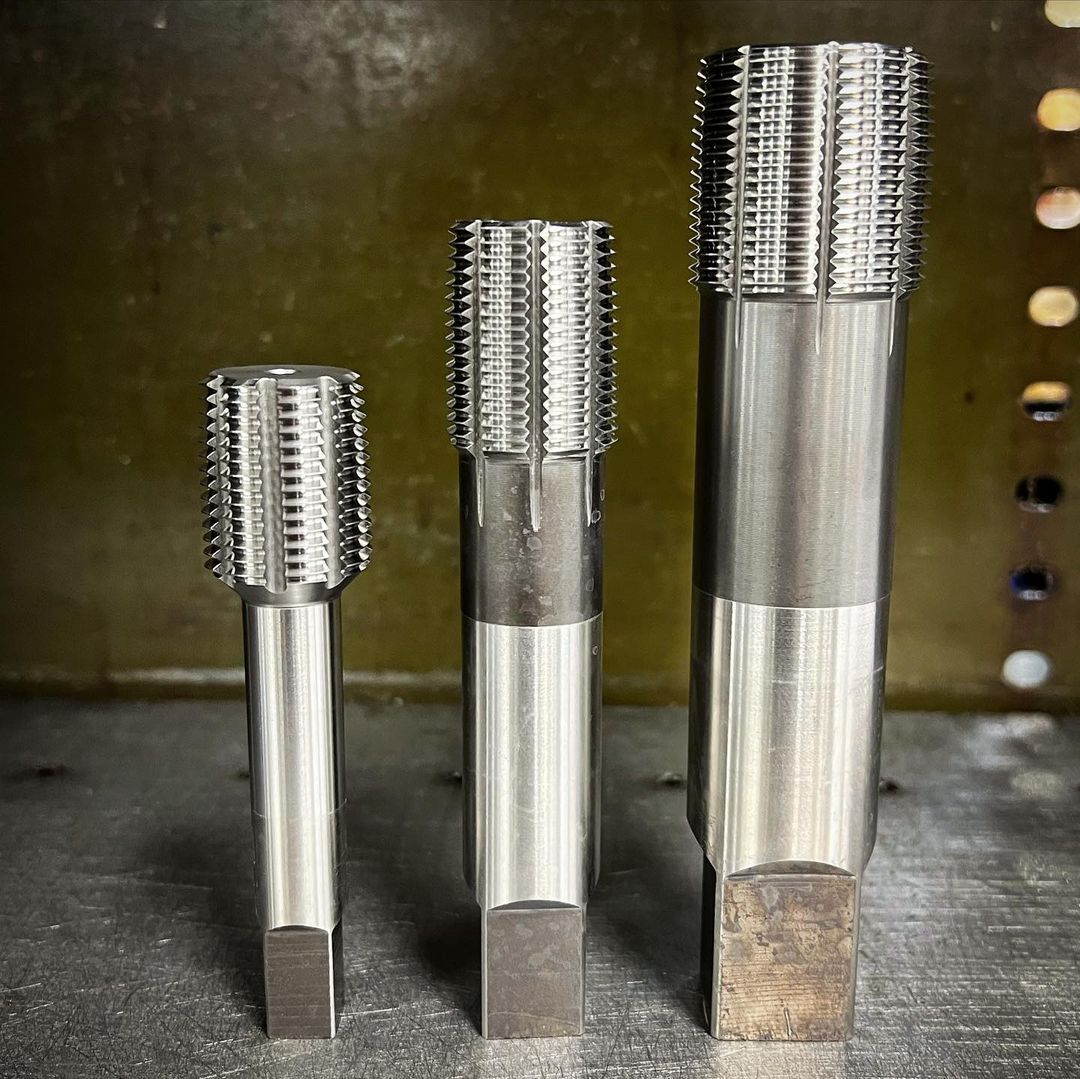Creating internal threaded holes for joining components is crucial when working with complex metal parts.
Taps are essential tools used to cut screw threads inside holes to enable assembly. With the wide variety of taps available, choosing the right type for an application requires careful evaluation of the workpiece, threading specifications, accuracy level, and production volume.
This article will explore the key decisions behind selecting an appropriate tap. We’ll highlight key differences between tap designs and provide clear guidance on pairing tap features with manufacturing needs.
Whether tapping by hand or with automated equipment, you’ll gain invaluable perspective on optimizing tap selection for superior threading quality, longer tool life, and lower production costs.
Table of Contents
Tap types based on hole accessibilities
One major consideration in selecting pipe taps is cutting threads through the material (like a tunnel) or internally at a blind bottom (e.g., halfway through material thickness).
Each type is used for different purposes and has specific design features based on its applications.
Through hole taps
Through hole taps, go through the material from one side to the other. When threading this way, chips easily fall to the other side, making this ideal for projects requiring regular chip evacuation. Some variations are available through holes, including spiral flutes and speak point taps. They are designed with extra deep spiral grooves for chip removal without clogging.
Blind hole taps
Some projects require enclosed bottom holes. In this case, special care is needed to extract cut chips and debris efficiently to avoid jams; otherwise, it could stall threads prematurely.
For making blind holes, forming taps is most suitable as they compress metal into spiral threads.
When working in confined spaces, various extractors, spring pressure, or vacuum suction help lift debris for smooth and uninterrupted threading.
Understanding tap materials
The durability of tap material is important in its performance, especially when discussing the workpiece’s intended lifespan and abrasiveness.
Different materials have varying degrees of hardness and resilience, which cater to diverse manufacturing needs.
High-speed steel (HSS)
Taps made from high-speed steel are known for their resistance to losing cutting sharpness even after repeated threading, hole spotting, or thread repairs in mild steel. If the variant includes cobalt, it further enhances heat and wear resistance, which makes it a reliable choice for various applications.
Carbide
For rigorous manufacturing work, where components are made of hardened steel, carbide taps stand out. Their extreme rigidity means durability even in taxing situations, although sudden overstressing can cause brittleness. Carbide has limited applications due to its brittleness.
Other materials
Other materials like carbon steel fit specific applications. For example, carbon steel suits occasional home use.
Considering global standard thread specification
To ensure taps fit current infrastructure, choices should align with globally standardized thread plans. From customary U.S. types like UNC/UNF to British Whitworth (BSW/BSF), British Pipe (BSP), North American National Pipe Threads (NPT/NPS), and various metric thread outlines, understanding these specifications is key to effective threading tasks.
Attachments integrate seamlessly without alterations by selecting taps that match prevailing fastener thread templates worldwide. Adherence to published standards guarantees taps synchronize with target openings so projects avoid mismatches or wasted efforts.
Installation chamfer styles
Tapering initial tap thread peaks are known as chamfers. They are important for optimized thread start. The choice of chamfer type weighs factors like the threading environment and space constraints.
Taper (long) chamfers
Long chamfers offer superior surface quality, thin chips, and longer tool life for hand taps. They are commonly used with nut taps and starter taps.
Plug (medium) chamfers
Standard general-purpose chamfers with low torque, good surface quality, normal thick chips, and a balanced pressure at the chamfer. Medium chamfers are widely used and are the standard choice for through holes, often paired with spiral pointed taps.
Bottom (short) chamfers
Short chamfers are designed for confined space threading and provide good surface quality, thick chips, higher pressure at the chamfer, and shorter tool life. They find application in extreme design scenarios where space at the bottom of the hole is limited. They are often paired with spiral fluted taps.
Conclusion
Selecting the optimal tap involves weighing key factors – access, standards, durability, precision, etc, to match application demands.
Understanding available options and installation considerations allows efficient, quality threads suited to diverse manufacturing situations. The right tap accelerates production and lowers costs.





